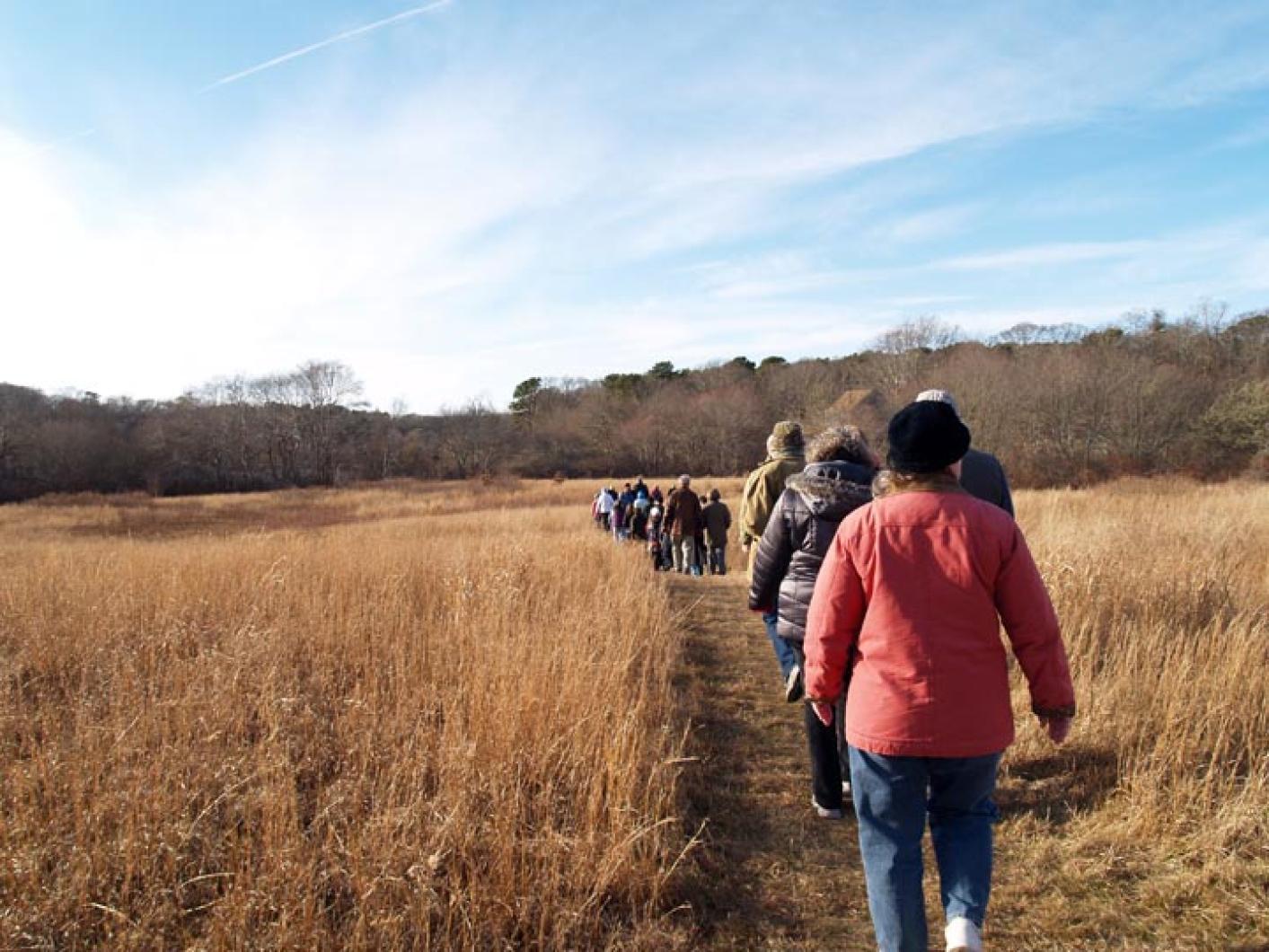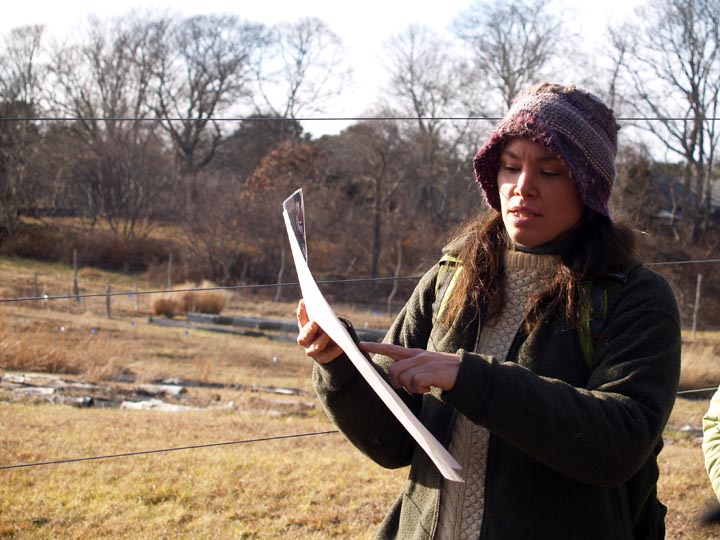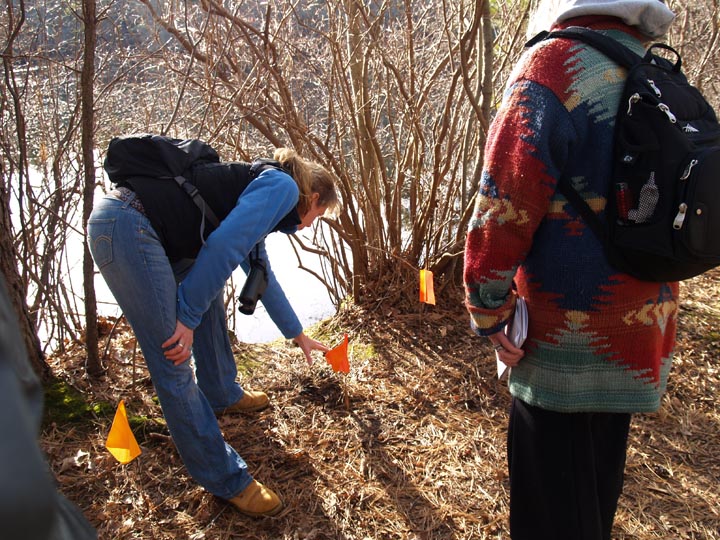This is what 118 people saw on Sunday afternoon’s otter walk sponsored by the Vineyard Conservation Society: three ducks, five dogs on leashes, a rusted tractor wheel, and four folding chairs with broken seats.
This is what they did not see: otters. But they saw plenty of evidence that otters are alive and well on the Island.
Guided by wildlife biologists Luanne Johnson and Liz Baldwin, the largest turnout of winter walkers in recent memory hiked through a mile and a half of trails, fields and bogs around the Wakeman Conservation Center searching for the elusive mammals, finding only their flat grassy slides into ponds, their lie-downs and their distinctive droppings.
If there were any question that the Island’s native river otters are thriving, it was answered by the dozen fresh mounds of otter scat marking their paths through the woods.
“This mucous lines and protects their digestive system from the sharp-shelled creatures they eat,” explained Ms. Johnson, sinking a stick into one of many piles of the scat.
It is a substance the two scientists have come to know well since embarking on a project last year to identify Vineyard otters’ habitats — from the cozy dens they carve into the shores of freshwater ponds and rivers to the icy slides they pack in the winter snows.
Despite the many images captured by 20 cameras stationed around the Island, even these full-time students of otter behavior have caught only fleeting glimpses of the busy weasels in the wild. “I’ve seen just four otters during a year of field work,” said Ms. Baldwin.
But happily her research has uncovered one popular Island otter hangout. “Mill Pond is where to look — that’s where you’ll find our most famous otters,” said Ms. Baldwin. “I feel like they know when the [West Tisbury] pond is being stocked with fish — and they’re there!”
With torsos like torpedoes, otters are built for swimming and, along with ospreys, one of the Vineyard’s most successful predators. “Otters themselves have no predators — except for humans,” said Ms. Johnson. “Hunting otters is outlawed here.”
That makes for a naturally fun-loving species with a sturdy presence on the Island, according to the Vineyard Conservation Society which hosted Sunday’s walk.
As their habitats begin to ice over, count on the otters to become more visible on the Vineyard landscape. Otters can’t spare the time to hibernate. To maintain their metabolism, they need to consume 10 to 15 per cent of their body weight in fish and crabs every day.
What is needed now, according to Ms. Baldwin and Ms. Johnson, is an otter head count to guide further research and environmental policymaking. Until funding turns up for an Islandwide otter census, they will count who they see and, when none turn up, fall back on a model for inspiration and display at events like Sunday’s walk.
“This otter is typical of what lives here,” said Ms. Johnson, introducing a stuffed 40-pound specimen, mounted on a fake rock. He was brought over from the mainland after being hit by a car.









Comments (1)
Comments
Comment policy »